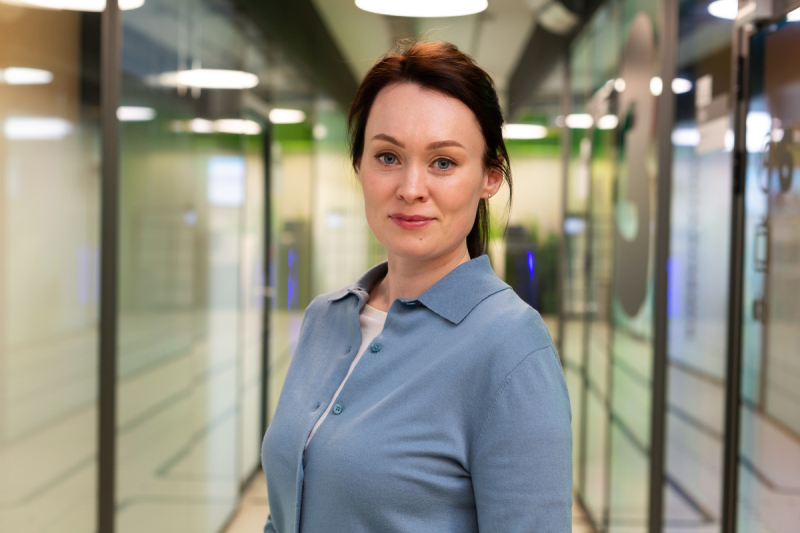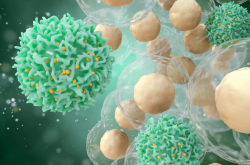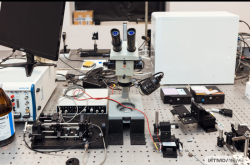Cardiologist turned product-driven researcher
I’ve been in cardiology for over 10 years. As an arrhythmologist, I specialize in heart rhythm disorders. Most of my work has to do with programming cardiac electronic devices, such as pacemakers and implantable cardioverter defibrillators, which help a patient’s heart beat at a normal rate and rhythm when their heart conduction system does not function properly.
I believe that, sooner or later, all medical specialists reach a point in their life when they have accumulated enough practice that they grow eager to change something for the better, be it their work space, department, or healthcare as a whole. One of the possible ways to do it is to write a thesis that might help them become a brand and build their own business model. As the latter is not for me, I decided to invest myself into creating one-size-fits-all solutions for cardiologists.
My project stemmed from my practice. Atrial fibrillation is a heart rhythm disturbance that affects primarily adults. It is so common that it is expected to reach pandemic status by 2030. People with this condition are at a greater risk of having a stroke. The best way to prevent this vascular catastrophe is to diagnose arrhythmia in a timely manner and prescribe antithrombotic therapy (anticoagulants). Although the mentioned strategy is stated in all clinical recommendations, I came to learn that in over 60% cases (out of 2,000 people), patients received treatment with insufficient preventive effect.
The solution I came up with is a clinical decision-support system. Though my colleagues and supervisor fully supported my idea, all they could recommend to me is to find an IT specialist who could make it happen. The search led me to ITMO, in particular to Daria Denisova, the head of ITMO's Center for Science Communication, who told me about the Public Health Sciences program.
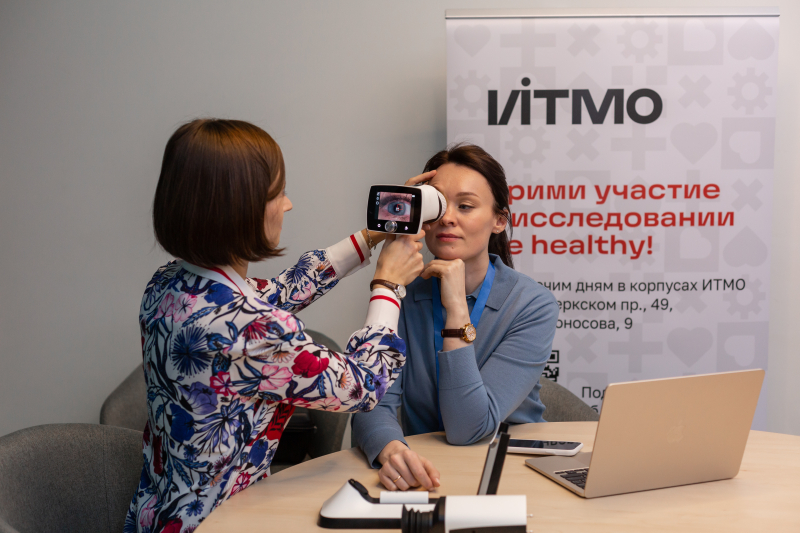
Lyubov Malyugina (right) with Anastasia Kryuchkova, an endocrinologist and a fellow student of the Public Health Sciences Master’s program. Credit: Maria Bakina / Megabyte Media
How to develop a project from scratch
Consult experts from other fields. As I bounced my idea off of Daria Denisova and Anton Barchuk (a cancer epidemiologist and the head of the Public Health Sciences Master’s program – Ed.), I realized that I lack expertise in research design, data analysis, and statistics. Still, the support and freedom that I felt at the faculty motivated me to apply for the program.
Vladimir Vasilyev, the Rector of ITMO University, once asked me: “Who is your product for?” – and that was one of the most thoughtful, practical questions I got on my project. I was pleased to see such a keen interest from someone who is not involved in medicine. The discussion it sparked became an eye-opener. I used to think that a rector cannot call you in for anything other than a lecture. So when he asked me, I understood that I need to find out what my audience wants instead of persuading them to buy what I created. Thus, my focus turned from developing a system to analyzing the needs and challenges facing medical specialists, as well as their thoughts on medical recommendations.
Read also:
Look for your audience. To get people talking about their product, developers need to pitch their ideas to friends and colleagues. This not only helped me find reliable associates but also brought greater meaning to our now-joint product. I cannot see my team without biostatistician Vladislav Kovalik or linguists Valeria Balaeva and Daria Panchenko. Another significant event for our project was getting to present it at the university’s contests for research and R&D projects.
Read also:
How To Determine Your Startup’s Target Audience and Value Proposition
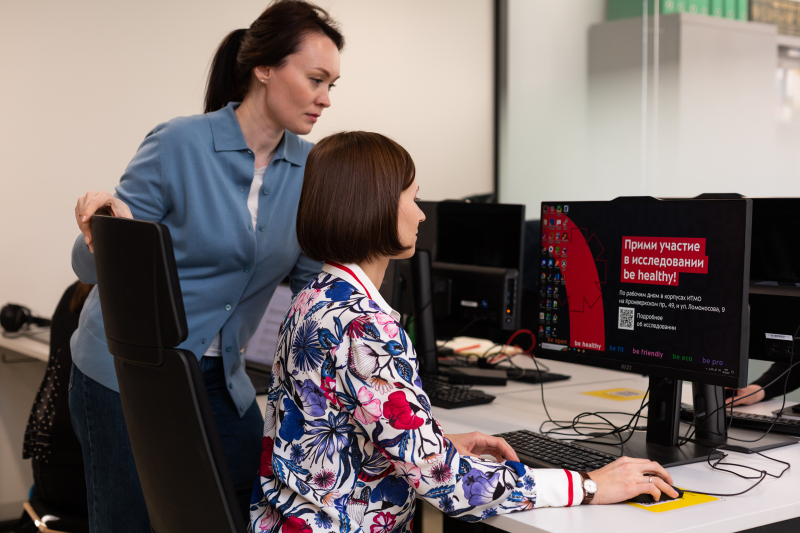
Lyubov Malyugina with Anastasia Kryuchkova, an endocrinologist and a fellow student of the Public Health Sciences Master’s program. Credit: Maria Bakina / Megabyte Media
Set clear boundaries. I support sharing ideas for the sake of having a discussion, but I think that it is crucial to understand exactly when it is that you are ready to partner up with someone else. Even if you support transparency, setting boundaries is still very important. Firstly, you should clearly state which part of the project you are responsible for. Secondly, you should formally stake your claim on the idea by either publishing an article or presenting it at a scientific conference. Thirdly, you should only share your work (in this case, a guide to conducting an in-depth interview) after its results have been published.
Use both qualitative and quantitative research. By using both approaches simultaneously, we hope to make it so the users (in this case, doctors) will tell us exactly what they need. Using a questionnaire constitutes quantitative research, while a qualitative approach means conducting in-depth interviews with doctors who specialize in treating fibrillation. We ask our interviewees to describe in detail which information sources they use, which experts they follow, what are the problems they face when trying to implement new treatments, what improvements would they suggest, and so on. For example, we found out that one of the reasons that doctors may sometimes choose to disregard clinical guidelines are the so-called gray areas, which are situations where there is no single best course of action. These gray areas exist because of a lack of research into certain conditions. In those cases, a support system will be useless. We plan to publish the initial results by June 2023.
Apply for grants. This year, I successfully applied for a stipend from the Vladimir Potanin Foundation, which means that I will receive an additional 25,000 rubles each month until I graduate. These funds will be used to support my projects. I suppose my clinical experience is what got through the first stage of the contest. I described my work on diagnosing and treating patients with extremely rare genetic disorders (classified as orphan diseases in Russia – Ed.), such as Fabry disease and pulmonary arterial hypertension. During the second stage, which was a face-to-face interview, my enthusiasm and passion for teamwork were probably why I was awarded the win.
As for the current state of the project, right now we are conducting surveys and interviews and expect to have the first tangible results by June. We’ve also submitted our theses for the congress of the European Society of Cardiology. After the first stage of our project is over and we find the optimal area in which to implement our clinical decision support system, we will begin its immediate development. In the future, we plan to integrate our solution into the clinical practice of local cardiologists and GPs.
Read also:
The Results of ITMO’s First Large-Scale Study of Quality of Life in Academia
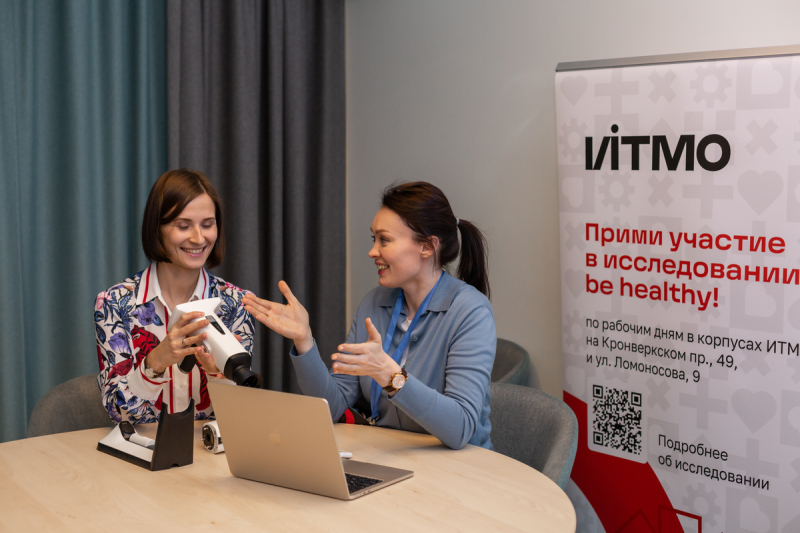
Lyubov Malyugina (right) with Anastasia Kryuchkova, an endocrinologist and a fellow student of the Public Health Sciences Master’s program. Credit: Maria Bakina / Megabyte Media
How your smartwatch can deceive you
I also work as a coordinator on the ITMO.Heart project, which is a part of a larger study on the health and quality of life of ITMO employees. The idea is that even healthy young students and staff members can exhibit benign and asymptomatic arrhythmias that do not require any treatment. Certain smartwatch models can register these irregularities and notify their users. Our goals include promoting a more mindful use of smartwatches; and to this end, we are looking into how students and employees use this information and whether it has any impact on their quality of life.
